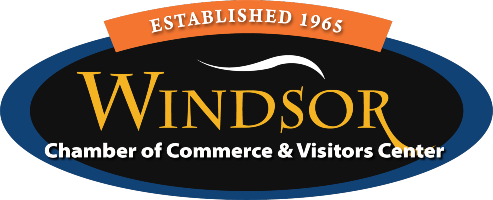Hidden Startup Expenses Explained: Real Examples and How to Avoid Them
Starting a business often begins with spreadsheets, dreams, and optimism — but not always with precision. Entrepreneurs budget for inventory, marketing, and website design, yet many overlook the quieter costs that can strain cash flow before profits arrive. From regulatory filings to employee onboarding, it’s the invisible line items that create early turbulence.
TL;DR
Hidden costs can break a startup’s momentum. Entrepreneurs often forget about:
-
Legal formation and compliance fees
-
Insurance, permits, and taxes
-
Software subscriptions and tech infrastructure
-
Employee benefits and training
-
Contingency funds for early inefficiencies
Planning for these expenses upfront can prevent the dreaded “cash crunch” within the first six months.
The Real Cost of Becoming a Legal Business
Registering your company isn’t as simple as filing one form. Depending on your business structure (LLC, S-Corp, or sole proprietorship), costs can include:
-
State registration fees: Often ranging from $50 to $500.
-
Operating agreements: Essential for LLCs, often drafted by an attorney or online service.
-
Employer Identification Number (EIN): Required for tax filing and payroll setup.
Many entrepreneurs save time and money if they use a formation plan from ZenBusiness for their new business. These services can assist with registering your business entity, filing for an EIN, and creating an operating agreement — simplifying what can otherwise become a complex administrative process.
For additional insight, check guidance from the U.S. Small Business Administration (SBA) on formation requirements and state-specific fees.
Commonly Overlooked Business Expenses
Here’s a breakdown of hidden or underestimated costs that often escape new founders’ attention:
|
Expense Category |
Description |
Estimated Range |
|
Licensing & Permits |
Local, state, or industry-specific compliance requirements |
$100–$2,000 annually |
|
Insurance |
Liability, property, or cyber insurance |
$400–$3,000/year |
|
Taxes & Accounting |
Quarterly filings, bookkeeping, and CPA retainers |
$1,000–$5,000/year |
|
Software & Subscriptions |
CRM tools, project management, accounting software |
$50–$300/month |
|
Employee Costs |
Payroll processing, benefits, and onboarding |
Varies by role |
|
Marketing Infrastructure |
Website maintenance, SEO, social automation |
$500–$5,000/year |
|
Contingency Fund |
Buffer for unexpected delays or repairs |
5–10% of total budget |
To build an accurate projection, tools like QuickBooks’ business cost calculator can help estimate recurring operational expenses.
Startup Cost Checklist
Before you launch, verify that you’ve planned for each of these line items:
-
Business registration and legal entity setup
-
Local business permits or industry licenses
-
Accounting and bookkeeping software
-
Business insurance coverage (general liability, cyber, or professional)
-
Payroll service provider setup
-
Marketing and brand collateral (logos, ads, web hosting)
-
Equipment maintenance or repair reserve
-
Tax projections and quarterly payment schedule
You can also explore resources like IRS.gov for tax filing requirements.
How to Plan for the Unexpected
Step 1: Create a 12-month runway
Forecast revenue against fixed and variable costs. Include a margin for inflation or supply-chain increases.
Step 2: Use separate bank accounts
Keep operating, tax, and contingency funds distinct. Platforms like Brex or Relay make account segmentation easy.
Step 3: Automate compliance and renewals
Tools like Gusto (for payroll) and Wave Accounting can automate recurring filings and reduce manual oversight.
Step 4: Build a relationships-first budget
Budget for mentors, consultants, and advisors. Their expertise often prevents mistakes that cost multiples later.
Step 5: Audit quarterly
Revisit subscriptions, SaaS tools, and vendor contracts. Even small eliminations can improve your runway.
FAQs
What’s the biggest hidden cost most startups overlook?
Payroll taxes and insurance. Many first-time founders underestimate the cost of employee-related expenses by up to 30%.
Do I need a lawyer to form my business?
Not necessarily. Reliable online services can file formation documents, draft operating agreements, and handle EIN registration for far less than traditional legal fees.
How can I minimize recurring tech costs?
Consolidate overlapping software tools, negotiate annual contracts, and use free or open-source alternatives until consistent revenue arrives.
Should I factor in my own salary during early budgeting?
Yes — even if you defer payment. This creates a realistic picture of your burn rate and helps investors evaluate operational efficiency.
Glossary
EIN (Employer Identification Number):
A federal ID number used for business tax filing and payroll.
Operating Agreement:
A document outlining ownership and management structure for an LLC.
Runway:
The number of months your business can operate before running out of cash, assuming current revenue and expenses.
Variable Costs:
Expenses that change depending on output — such as packaging, materials, or contractor payments.
Highlight: Automating Administrative Burden
Business owners often spend 10–15 hours per week managing compliance and payroll paperwork. Tools like Notion, Gusto, and HubSpot can automate these workflows — freeing time for customer development. For businesses scaling beyond the solopreneur phase, automation isn’t a luxury; it’s a multiplier.
Conclusion
Most startups fail not because of bad ideas but because of poor financial foresight. Every overlooked expense represents a potential shortfall in trust, time, or capital.
By anticipating these hidden costs, separating fixed and variable expenses, and automating where possible, founders can turn operational chaos into sustainable momentum.
Success, after all, isn’t about spending less — it’s about spending consciously and strategically.
Discover the vibrant community of Windsor, California, and explore the endless opportunities for business and leisure by visiting the Windsor Chamber of Commerce today!
This Hot Deal is promoted by Windsor Chamber of Commerce and Visitors Center.

